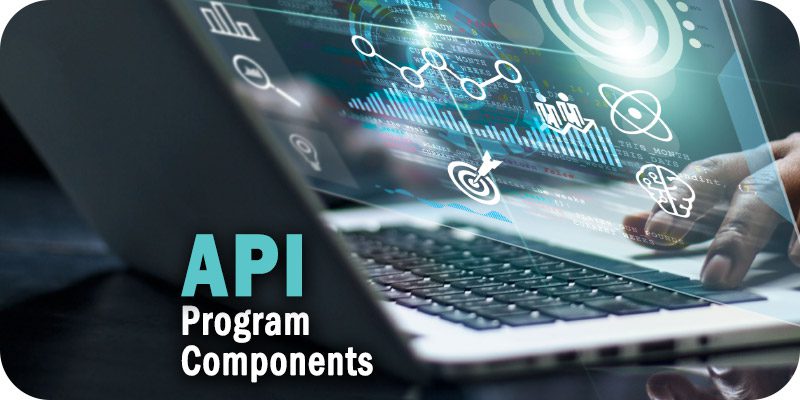4 Essential API Program Components to Consider Right Now


Solutions Review’s Expert Insights Series is a collection of contributed articles written by industry experts in enterprise software categories. In this feature, Axway VP of Digital Transformation Brian Otten offers commentary on essential API program components to consider at your organization.
 We’ve all encountered that feeling of buyer’s remorse after a big investment. Put in the context of a business setting — specifically, a major tech investment — there’s even more at stake. Many organizations can get stuck with using APIs (application program interfaces) as “just another integration pattern,” or just the way to modernize the IT estate in a tech-led approach. They often fail to address key digital business drivers or work to gain API adoption.
We’ve all encountered that feeling of buyer’s remorse after a big investment. Put in the context of a business setting — specifically, a major tech investment — there’s even more at stake. Many organizations can get stuck with using APIs (application program interfaces) as “just another integration pattern,” or just the way to modernize the IT estate in a tech-led approach. They often fail to address key digital business drivers or work to gain API adoption.
That’s probably why 71% of IT and business decision makers recently said they didn’t experience the business results they had planned from their APIs. At the same time, they understood the nature of the missing link: 86 percent of those surveyed agree or strongly agree that the value of their APIs is not in their existence alone but in their consumption.
Getting the most from API platform technology investments will require collaboration and an enterprise-wide program to drive adoption. Here’s why it’s critical to get all teams – whether business or IT – on the same page.
API Program Components
Thinking Through the Costs of a Major Tech Investment
APIs are a game-changing digital technology that allows applications to communicate with each other. They are the key connective ingredient in smart phones, banking apps, healthcare devices, retail centers, and just about any modern digital ecosystem.
APIs have transformed the way people and businesses interact with their technology, but their power isn’t really unlocked when a company decides they want to “do” APIs. Success with APIs depends on a more significant shift in organizational thinking to maintain tight alignment with business goals.
Too often, APIs are treated as one-off projects that are disconnected from the larger business picture and lack alignment with regards to strategy and goals. Because of this, they fail to reach their potential value. For the businesses managing these APIs, this can translate into small versus large revenue gains from their tech investment — or worse, potential loss.
The cost of building an API varies around the world, with studies showing anywhere between $7,500 to $35K – not to mention hosting and maintenance costs. What’s more, in an enterprise without a centralized, well-defined API program, it’s common to find different business units building the same APIs independently from each other. Our research on API complexity found companies stand to save nearly $30K on average every time they reuse an API.
As the API economy grows and becomes more competitive, these shortfalls will become even more apparent. While this relates back to the design of the APIs, from the quality of their data to reliability, it’s also a matter of how easy they are to consume and reuse in other scenarios to speed up time-to-market.
Focus on the Value of APIs Versus Bringing More to Market
Tiffany Xingyu Wang, the Chief Strategy Officer at Spectrum Labs, said it well in a 2021 Harvard Business Review article: “A lot of work is required to naturalize an established company for the digital economy. But all that work will be in vain if the thinking doesn’t change first.”
Many businesses have the idea that more APIs translates into a stronger positioning in the marketplace. The majority of companies from the survey I mentioned earlier currently have 100 or more APIs published, but quantity alone can add complexity to business operations.
Instead of scrambling to build more APIs or purchase new software, making sure that your API program is aligned to the business drivers will lay the surest foundation for success: an API program that doesn’t just improve efficiency but also drives revenue and contributes to the business at the heart of your organization.
Four Essential Components of an API Program
Adopting an API First mindset allows a wide set of strategic stakeholders to re-imagine the capabilities of the business as digital products and services with sets of working APIs before building applications and the services that underpin them.
This requires a significant organizational shift. In my experience, there are many strategic stakeholder concerns that need to be broken down and tackled. Quite often, these seem to be competing for focus, attention, and funding.
Enterprises should use the experts in each of these strategic areas and use an Open Platform strategy as the goal that everyone can work towards, while still achieving tactical goals. Four essential components of a solid API program are strategy, organizational governance, digital product delivery, and platform enablement.
Strategy
Use the API program to take steps to balance strategic stakeholder concerns in the areas of efficiency, openness, experience, and platform economy.
For example, many organizations get stuck reacting to regulation and compliance at the expense of innovation and revenue-generating initiatives. Instead, see a regulatory push as an opportunity to use standards internally and externally, which has the added bonus of improving an organization’s efficiency, UX, and ability to participate in a platform economy.
Organizational Governance
Ensure the API program is federated with clear definitions of team structures, onboarding processes, and KPIs defined within an enterprise-wide API roadmap. Consider establishing a team charter and mission statements, then curating learning resources for training and education in API First practices.
Digital Product Delivery
Take advantage of an API program’s engagement reach to fill in gaps in product culture to ensure APIs are managed as products. The role of API Product Managers is crucial in driving alignment between IT and business. API Product Managers should collaborate with Business SMEs and their teams on value propositions to deliver abstracted business capability APIs that are easy to understand and simple to implement.
Platform Enablement
Protect API platform technology investments through API program collaboration and adoption. In the study I mentioned previously, adoption was an essential indicator of API program success. 69% of respondents said they expect return on APIs to increase if developers could more easily discover, subscribe, and use their APIs.
Only a truly universal API platform can cater to both internal and external needs, deployed and available in a distributed world. We’re seeing an opening up beyond internal teams of application developers, who work with an API portal, to external partners and ecosystems, where new revenue sources and new markets are available.
This is driving a shift to adopt API marketplaces, which help enterprises bundle, curate, and market API products that add real – and monetizable – value. Never forget that experience counts! Consumers are not just your end users, but also developers within and outside your organization.
With tech budgets expected to rise in 2023 alongside economic uncertainty and supply chain disruption, the need to map out plans for digital transformation efforts (and stick to them) is critical. Growth slotted within the API economy, from development to management, drives the need to gain clarity around API objectives and expectations so you can successfully execute your program vision.




















